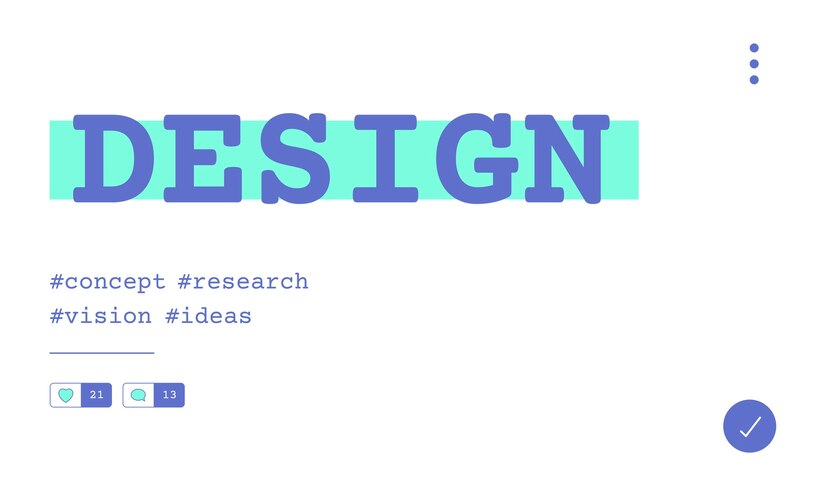Anyone involved in web development—whether they’re crafting a simple personal blog, constructing a corporate site, or building intricate web applications—faces a significant decision: whether or not to use CSS for their project. Recognizing the potential and pitfalls of CSS is paramount for making an informed choice, and this comprehensive guide aims to demystify this critical technology.
Demystifying CSS
An essential pillar of web design, Cascading Style Sheets (CSS), plays a pivotal role in determining the aesthetic presentation of HTML or XML documents. If we were to liken web development to a fashion show, CSS would be the stylist, dictating everything from the layout, color palette, and fonts to the spacing of elements on a webpage. It’s CSS’s unique ability to customize the visual features of sites that make it an indispensable tool in the web design toolkit.
Integrating CSS with HTML is a straightforward affair. It can be encapsulated within an HTML document via two primary methods: introducing internal CSS within HTML documents using <style> tags in the <head> section, or linking an external CSS file with the HTML documents. The latter method applies the style rules to HTML elements, promoting a neat, orderly way to execute CSS.
The Role of CSS
A primary objective of CSS is to create a clear distinction between content and presentation, much like a chef separating ingredients from the cooking process. This segregation aids developers in keeping HTML code free from embedded CSS, simplifying the process of style modifications and ensuring uniformity across web pages.
If you’re keen to delve deeper into the intricacies of CSS and web development, a visit to purecode.ai would be beneficial. It serves as an invaluable resource for both seasoned developers and beginners, offering a wide array of resources and a marketplace for custom components. No matter where you find yourself in your web design journey, purecode.ai has something to offer.
The Marriage of CSS and HTML
Consider CSS and HTML to be partners in a dance, with CSS leading the way. CSS sets style rules for HTML elements, creating a harmonious and visually appealing layout. A CSS rule is made up of a selector and a declaration block. While the selector identifies the HTML element to be styled, the declaration block consists of the style properties and their respective values. This well-orchestrated dance leads to effective and organized web page styling.
One of CSS’s great advantages is its capacity for global style changes via a single file. By linking this file to multiple web pages, a cohesive design is maintained across the entire website. It’s akin to a universal remote control capable of functioning multiple devices from just one location, providing convenience and uniformity.
Unveiling the Benefits of CSS
As we unravel the journey of CSS, it’s essential to spotlight its multitude of merits. Imagine delving into a treasure chest full of valuable perks like:
- Enhanced speed;
- Superior design versatility;
- Accelerated loading times;
- Comprehensive device compatibility.
With CSS, developers enjoy accelerated web development, thanks to the optimization of site speed, reduction of render-blocking, and minimized reflows. Picture CSS as a proficient artisan, morphing raw materials (HTML elements) into a masterpiece (web pages) with maximum efficiency.
CSS also shines when it pertains to design adaptability. It offers various modules such as the CSS Flexible Box Layout and adaptive grids, enabling developers to curate designs that adjust according to the screen size. This deems particularly useful when creating user-friendly, responsive designs.
Maximizing Time Efficiency and Consistency
CSS exerts a significant role in maximizing time efficiency and consistency in the realm of web design. It functions much like an invaluable personal assistant that keeps your schedule intact, maintains punctuality, and upholds consistency. Using a single file that can be linked to multiple web pages, CSS ensures a consistent design throughout the entire website.
Using external CSS files can further promote efficiency, especially when utilized in a single CSS file. This allows the browser to cache the CSS file, leading to a faster loading time for pages. Plus, it eradicates redundancy in web design by eliminating repeated styles, optimizing the CSS file, and enhancing the overall website performance. This is akin to having a universal charger for various devices – serving multiple purposes, saving time, and ensuring harmony.
Promoting Design Flexibility
CSS equips web developers with the tools to create flexible, engaging designs. The CSS Flexible Box Layout module is proof of such an advantage. It enhances the box model for user interface design and allows one-dimension arrangement of items. This technique can be particularly beneficial for developing responsive designs like navigation menus, card layouts, and effective content distribution.
CSS permits the creation of responsive designs by employing media queries. These queries apply various styles based on the device characteristics, such as screen width and height, permitting the design to adapt smoothly to diverse devices and screen sizes. This is similar to having a versatile genie that molds itself to your every command, ensuring a seamless user experience across all devices.
Accelerating Page Loading Speeds
In the fast-paced digital realm, every second matters. Slow page loading can deter users, leading to higher bounce rates. Here’s where CSS comes to the rescue by improving page loading speeds. It accomplishes this by reducing code density and allowing browsers to cache stylesheets, thereby enriching the user experience.
The density of code on a web page, especially complex and dense web elements, can negatively impact page loading speeds. CSS aids by separating design and layout from content, leading to neater and more succinct code. Imagine having a spring cleaning session for your website, discarding the unnecessary elements, and retaining the essentials, leading to a streamlined and faster-loading site.
Device Compatibility and Responsive Design
In our technologically driven era, with websites being accessed from numerous devices, CSS plays a pivotal role in ensuring device compatibility and responsive design. It serves as a universal translator, interpreting, and adapting the web design to be compatible with different devices.
CSS is instrumental in fostering a mobile-friendly website design by facilitating responsive web design. This allows the website to adapt and respond to various screen sizes, ensuring a smooth user experience across all devices. It’s much like having an adjustable magic carpet that alters its size based on the passenger count, providing comfortable transport for everyone.
Disadvantages of Using CSS
Browser Compatibility Issues
Browser compatibility remains a persistent challenge when using CSS. Ensuring consistent rendering across different browsers often necessitates additional efforts, testing, and adjustments to achieve a uniform appearance and functionality.
Complexity for Beginners
For individuals new to web development, mastering CSS can pose a steep learning curve. The language’s intricacies and nuances may present challenges, requiring dedicated time and effort to attain proficiency.
Security Concerns
While CSS itself is not inherently insecure, it can be leveraged in security vulnerabilities such as Cross-Site Scripting (XSS) attacks. Vigilance and best practices are essential to mitigate these risks and safeguard web applications against potential exploits.
Limitations in Layout Control
Despite its versatility, CSS has inherent limitations in layout control, particularly when compared to more specialized tools. Addressing complex layout requirements may necessitate the use of supplementary tools or techniques to achieve desired design outcomes.
Best Practices for Optimizing CSS Usage
Addressing Browser Compatibility
To mitigate browser compatibility issues, adopting a systematic approach to testing and validation across various browsers is crucial. Utilizing CSS reset stylesheets and vendor prefixes can help standardize rendering, promoting consistency across different platforms.
Balancing Design and Performance
Striking a balance between aesthetic design and performance optimization is essential. Employing minification and compression techniques for CSS files can contribute to improved page loading speeds, enhancing user experience without compromising visual appeal.
Enhancing Security
Implementing secure coding practices and regularly updating CSS frameworks and libraries are imperative for fortifying web applications against potential security threats. Additionally, validating user input and sanitizing output can mitigate the risk of XSS vulnerabilities.
Comparing the Advantages and Disadvantages of CSS
When weighing the advantages and disadvantages of CSS, it becomes evident that while CSS empowers designers with unparalleled control and flexibility, it also presents challenges related to browser compatibility, complexity, security, and layout control. By understanding these dynamics, developers can make informed decisions and employ strategies to maximize the benefits of CSS while mitigating its drawbacks.

Real-World Examples of Effective CSS Use
Responsive Web Design
CSS shines in the realm of responsive web design, enabling seamless adaptation to diverse screen sizes and devices. Through media queries and flexible layouts, CSS facilitates the creation of engaging and accessible web experiences across a spectrum of devices.
Customized Styling and Theming
The versatility of CSS allows for extensive customization and theming, empowering designers to craft unique visual identities for websites and applications. From color schemes to typography, CSS enables precise control over the aesthetic aspects of digital interfaces.
Animation and Interactivity
CSS empowers developers to infuse web pages with captivating animations and interactive elements. Leveraging CSS transitions, transforms, and keyframe animations, designers can enhance user engagement and create immersive digital experiences.
Use CSS Like a Pro
Efficient Selectors and Specificity
Employing efficient selectors and specificity in CSS rules can streamline style application and improve performance. By prioritizing specificity and avoiding overly broad selectors, developers can optimize the rendering and maintenance of stylesheets.
Modular and Scalable Stylesheets
Adopting modular and scalable approaches to organizing stylesheets promotes maintainability and reusability. Utilizing methodologies such as BEM (Block Element Modifier) or CSS-in-JS can enhance code organization and facilitate collaboration within development teams.
Performance Optimization Techniques
Incorporating performance optimization techniques, such as CSS minification, file concatenation, and utilizing modern CSS features like Grid and Flexbox, can significantly enhance the efficiency and speed of web page rendering.
Conclusion
In conclusion, the advantages and disadvantages of CSS underscore its pivotal role in web design and development. While CSS empowers designers with unprecedented control over visual elements and layout, it also presents challenges related to browser compatibility, complexity, security, and layout control. By embracing best practices, leveraging real-world examples, and adopting advanced techniques, developers can harness the full potential of CSS while mitigating its drawbacks, ultimately creating compelling and resilient web experiences.



